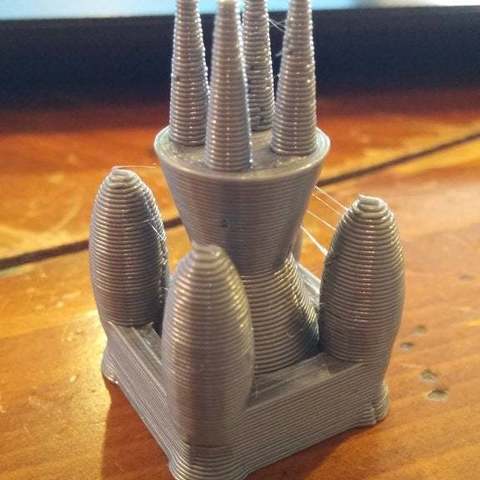
Openscad Tutorial - Random Egg Hourglass Structure
cults3d
Welcome to our comprehensive OpenSCAD tutorial! In this series, we will take you on a journey through the world of 3D modeling and rendering using the powerful OpenSCAD software. First things first, let's talk about what OpenSCAD is. Simply put, it's an open-source 3D CAD (Computer-Aided Design) tool that allows users to create complex shapes and designs with ease. But don't just take our word for it - let's dive in and explore the world of OpenSCAD together! In this tutorial series, we will cover everything from the basics of OpenSCAD syntax to advanced techniques like creating parametric models and using OpenSCAD's built-in libraries. Whether you're a seasoned designer or a complete beginner, our OpenSCAD tutorial has got you covered. So what are you waiting for? Let's get started on this exciting journey into the world of 3D modeling with OpenSCAD! In this first part of our tutorial series, we will introduce the basic concepts of OpenSCAD and show you how to create your very first 3D model using the software. **Getting Started with OpenSCAD** Before we begin, make sure you have OpenSCAD installed on your computer. If you're not sure where to download it from, check out our resources page for a link to the official OpenSCAD website. Once you've got OpenSCAD up and running, let's take a look at the user interface. As you can see, the software has a clean and intuitive design that makes it easy to navigate. **The Basics of OpenSCAD Syntax** OpenSCAD uses a unique syntax that is based on a combination of C-like programming languages and geometric modeling concepts. Don't worry if this sounds confusing - we'll break it down for you in simple terms. In OpenSCAD, you can create 3D models using a variety of functions such as `cylinder()`, `cube()`, and `sphere()`. These functions allow you to specify the dimensions and properties of your model with ease. For example, let's say we want to create a cube with a side length of 10 units. We can use the following code: ```scad cube([10, 10, 10]); ``` This will generate a cube with a side length of 10 units. Simple, right? **Your First OpenSCAD Model** Now that we've covered the basics of OpenSCAD syntax, let's create our very first model using the software. Open up OpenSCAD and create a new project by clicking on "File" > "New". Then, select "Cube" from the menu and enter the following code: ```scad cube([10, 10, 10]); ``` Hit the "Run" button to render your model. Congratulations - you've just created your very first OpenSCAD model! In this part of our tutorial series, we have covered the basics of OpenSCAD syntax and shown you how to create your very first 3D model using the software. Stay tuned for the next part of our tutorial series where we will cover more advanced topics like creating parametric models and using OpenSCAD's built-in libraries.
With this file you will be able to print Openscad Tutorial - Random Egg Hourglass Structure with your 3D printer. Click on the button and save the file on your computer to work, edit or customize your design. You can also find more 3D designs for printers on Openscad Tutorial - Random Egg Hourglass Structure.
